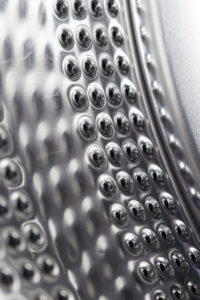Most industrial parts needs to be cleaned but there are different ways to handle the task. What is the difference  between traditional parts cleaners and ultrasonic cleaners? Auto technicians, hospitals and others who need to deep clean a wide range of industrial parts – big and small, delicate and sturdy – swear by ultrasonic cleaner technology to get the job done. While ultrasonic cleaners may require a bigger investment up front, they produce a better return on investment compared to the alternative.
between traditional parts cleaners and ultrasonic cleaners? Auto technicians, hospitals and others who need to deep clean a wide range of industrial parts – big and small, delicate and sturdy – swear by ultrasonic cleaner technology to get the job done. While ultrasonic cleaners may require a bigger investment up front, they produce a better return on investment compared to the alternative.
What is a parts washer?
A parts washer is a piece of equipment used to remove contaminants or debris including carbon, dirt, grease, metal chips, cutting fluids and paint from industrial parts and work pieces. Parts washers are used both in new manufacturing and re-manufacturing processes to clean a range of parts in preparation for assembly, inspection, surface treatment, packaging and distribution. Parts washers range from the simple manual “sink-on-a-drum” commonly used in auto repair shops to very complex, multi-stage units with pass-through parts handling systems. Many parts washers are considered “green” because they conserve water, reduce energy consumption and use closed-loop, zero discharge systems that never leak contaminants into the environment.
How should a business decide whether to invest in traditional parts cleaners or ultrasonic cleaners?
Parts cleaners vs. ultrasonic cleaners
Parts cleaners
There are two different options on the market for traditional parts cleaners. The first is a standard scrub cleaner. The cleaner solution is designed to soften up the grit and grime while a brush or rag is used to wipe it away. The exact cleaning utensil does vary based on what part or item is being cleaned but the scrubbing action remains the same. The main problem with this type of parts cleaner is that some of the debris get spread throughout the mechanical equipment. If an object has any kind of porous material it may lodge in. Ultimately, this cleaning solution always leaves some grime in place.
The second traditional parts cleaning method is the “run-through” cleaning method. This is a cleaner that functions without actually taking the equipment apart. It could be compared to pouring clog-clearing solution down a drain instead of snaking the drain. Run-through cleaners typically contain harsh chemicals, which over time reduce the strength of the material and are not great for the environment. This method is fine for minor, infrequent cleanings but it can cause damage to the machinery in the long-term.
Ultrasonic cleaners
Ultrasonic cleaners cost more than parts cleaners and may require some parts disassembly. The advantages, though, are many. The gentle cleaning solution breaks down grime at the molecular level, detaching it from the surface and cleaning every nook and cranny. The gentle process extends the life of the parts and saves time with the ability to wash multiple parts at one time. The technology is simple to use and only requires one operator. Particularly for delicate parts that can be damaged easily, ultrasonic cleaners are a must.
Industrial organizations clean parts. They must weigh the pros and cons of the parts washers available and make the investment that best fits their needs.
For more than two decades, Ultrasonics International has helped businesses improve profitability by investing less time and fewer staff for their industrial cleaning needs. Our ultrasonic cleaners clean more thoroughly, efficiently and faster than other cleaning methods. We serve many industries including automotive, marine and government agencies. Contact our sales team today to see how our cleaning technology can help you maximize profits.

